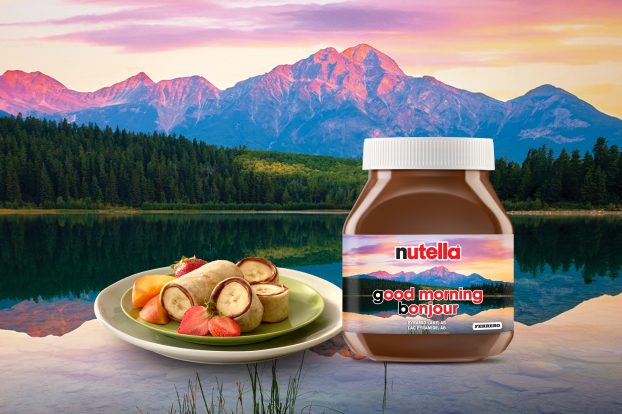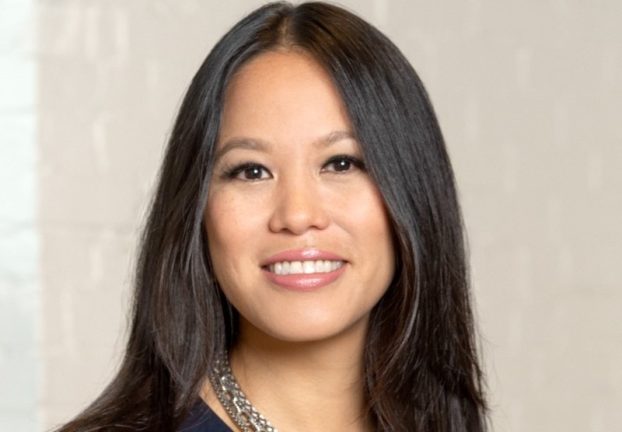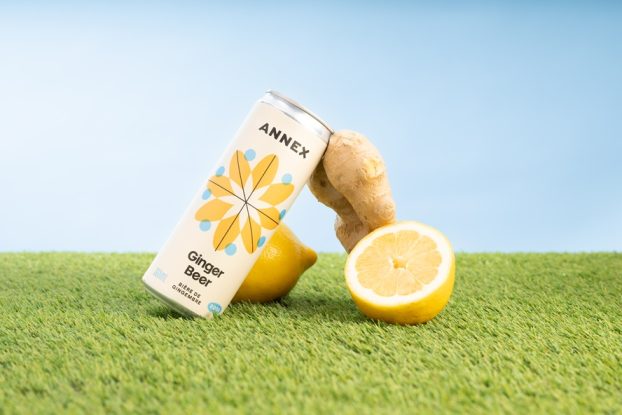Also in this retrospective:
* Celebrating 35 years in style: Though it began as a David in a world of packaged-goods Goliaths, Alberto-Culver has employed research, production innovation and aggressive advertising to rise to the No. 3 spot in the Canadian hair care market p.26
* Leonard Lavin a man of many firsts p.28
In 1961, Alberto-Culver of Melrose Park, Ill. formed an international division to bring its VO5 line of hairdressing products to eight countries outside the u.s., including Canada. That move led to the opening of a 30,000-square-foot production plant in Oshawa, Ont.
One year later, the company’s factories began producing Alberto VO5 Shampoo, a product that would become the foundation for an extraordinary record of sales growth that continues unabated to this day.
The year VO5 Shampoo was introduced, Alberto-Culver’s sales more than doubled to us$60 million. Last year, after its 20th consecutive year of record sales, Alberto-Culver sold almost $1.6 billion of hair care, skin care, food and household products around the world. Although unconfirmed, it’s believed that the company’s Canadian unit contributed about $70 million in sales to the global organization in 1996.
Now, thanks to the parent company’s acquisition last year of the St. Ives Laboratories skin care business, and expanded global export opportunities, Alberto-Culver Canada is in the midst of spending $6.5 million to add 35,000 square feet of office and production space to its headquarters in Etobicoke, Ont.
The addition of the St. Ives product line ‘brings diversification to Alberto-Culver Canada, where all of our eggs are not in the hair care basket,’ says company President J. Michael Fearon, adding, ‘In the early years, there was really only one product, and that was VO5 Hairdressing. From there, we’ve evolved to a total hair care line.’
Alberto-Culver Canada plant manager Sam Rekker, who has been with the company longer than any other employee, began working at the Oshawa plant in 1963, when the company’s sales topped out at $3 million. He can remember most of the products that have been launched by Alberto-Culver over the years.
Rekker recalls that when he started his career at Alberto-Culver, the company was already producing an extensive lineup of products, including VO5 Shampoo and Conditioner – sold in glass bottles – along with VO5 Hair Spray, Rinse-Away anti-dandruff agent, and the TRESemme lineup of hair colors.
Among the products to be introduced in that period included, in 1963, New Dawn Hair Color, which was the first shampoo-in permanent hair color on the retail market; Consort Hair Spray for men in 1965; and FDS feminine deodorant spray in 1966.
In 1966, thanks to continually growing sales in Canada, the company moved to a brand new, 100,000-square-foot office, production, and warehouse facility in Etobicoke, Ont., a suburb on the western fringes of Toronto. Rekker says one of the main reasons for the move was so that the company could be closer to its raw material suppliers and, thus, be able to implement a just-in-time manufacturing strategy.
In 1969, Alberto-Culver introduced Sugar Twin, a brand within its grocery and household product division that would soon become the top-selling sugar substitute in Canada (Sugar Twin is currently the No. 1 sugar substitute brand in Canada, with a 45% share of market). Sales of the brand were later bolstered by the company’s decision to market a new formulation of the product that measures and pours like sugar.
Developed later on within the division were Static Guard anti-static spray, which was a huge hit when it was launched in the mid-1970s; Molly McButter, which debuted in Canada in 1983; and Mrs. Dash salt-free seasoning, introduced in 1986. Baker’s Joy, a non-stick cooking spray brought to market in 1980, was recently discontinued.
Although it may seem a little incongruous for a company to be producing food products in the same location that it makes shampoo and hair spray, Rekker says the two sides of the business have always been kept apart, both organizationally and physically within the production plant.
In recollecting the period between 1980 and 1991, Rekker says it was one of frequent product line expansions, corporate acquisitions, and buoyant sales.
‘We had an incredible amount of growth then. Our sales doubled, and then doubled again,’ he says, indicating that Alberto-Culver’s sales increased from about $13 million to $65 million in Canada during that time.
‘There was an incredible amount of change going on then,’ he says. ‘There were a lot of new products around that I never even saw. Quite a number of products were acquired and either discarded or sold off as a unit.’
One introduction that did have staying power, however, was that of the Alberto Hair Care line of shampoo, conditioner and hair spray that was launched around 1980.
In fact, for a long period, Alberto shampoo actually outsold the original VO5 line in Canada. ‘Slowly, that’s turned around again and VO5 is the larger brand of the two,’ Rekker says.
Dan Sulan, Alberto-Culver Canada’s vice-president of operations, started working for the company 15 years ago, at which point the company’s brand portfolio contained such stellar performers as VO5 and Balsam shampoos, New Dawn hair color, and Sugar Twin.
According to Sulan, sales in Canada at that time were only around $10 million. He credits the introduction of the Alberto Mousse European Styling Foam in 1984 for really kick-starting Alberto-Culver’s sales activity in Canada.
‘We were fighting for a dominant position in the market right from the start,’ recalls Sulan. ‘L’Oreal had already announced their launch of an aerosol mousse when we were still basically trying to come up with our formulas and produce the product.’ But Alberto-Culver made up for lost time quickly and made it to store shelves with a product in less than two months – just one week after L’Oreal.
Then a fortunate turn of events that had more to do with the worldwide availability of aluminum cans than with the demand for styling mousse conspired to give Alberto-Culver the edge on its competition, Sulan says. In short, Alberto-Culver had sufficient supplies of aluminum cans to package its mousse product, and its competition didn’t.
As a result, it quickly became the market leader in Canada for styling mousse, and has not relinquished that position ever since.
Buoyed by the immediate success of its styling mousse, Alberto-Culver launched its Alberto European Hair Spray and Gel products shortly afterward. In fact, those products were launched in Canada before anywhere else in the world, and Canada is still the only division in the Alberto-Culver network that markets the Alberto brand lineup in its entirety.
In 1985, the TRESemme- and Indola-branded professional hair care products were brought into the Canadian salon market with a fair degree of success. In 1988, the Bold Hold styling line for teenagers was launched. It enjoyed a fast start, but sales dropped off and the line was discontinued a few years later.
Sulan says the company has always kept ‘its ear to ground’ to anticipate market demand, and to keep pace with, if not lead, its competition.
To illustrate his point, Sulan mentions that for the past three years, Alberto-Culver Canada, which runs one of the most cost-efficient production facilities in the Alberto-Culver international group of companies, has been producing a wide range of products for export to countries around the world, including Mexico, Hong Kong, Chile and Pakistan.
It is just that sort of diversification that will ensure that Alberto-Culver Canada continues to hold an important and autonomous position within the worldwide organization of its parent company, says company President Fearon.
‘We have more autonomy than most companies within consumer packaged goods in Canada because we don’t simply employ a North American strategy for our market,’ Fearon says.
Drawing attention again to the St. Ives portion of Alberto-Culver’s business, Fearon says it will require a made-in-Canada marketing solution to position the line where it should be within the Canadian market.
‘St. Ives is under-developed in Canada relative to the u.s. There’s certainly some top line growth opportunity and profit opportunity there. And, strategically it puts us into a segment where we want and need to be… high growth skin care. We want to have less reliance on the hair care segment.’
According to Fearon, Alberto-Culver is the No. 3 player in the Canadian hair care market, behind Procter & Gamble and Lever-Ponds, respectively.
Stressing that the company wants to avoid doing anything that might contribute to hair care products becoming a loss leader segment, Fearon says, ‘We are looking to develop products that do, in fact, have a real point of difference to the category.
‘Further to that, we are employing a philosophy of intimacy with our major accounts. It’s a process of vertical integration that penetrates the major accounts from the very top levels. We just have to execute with excellence.’























